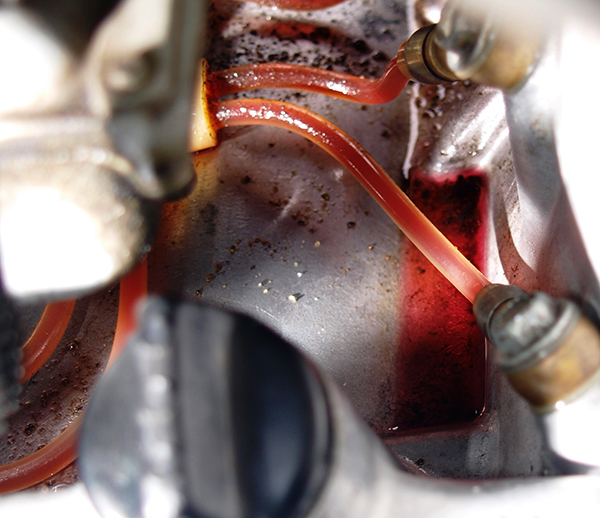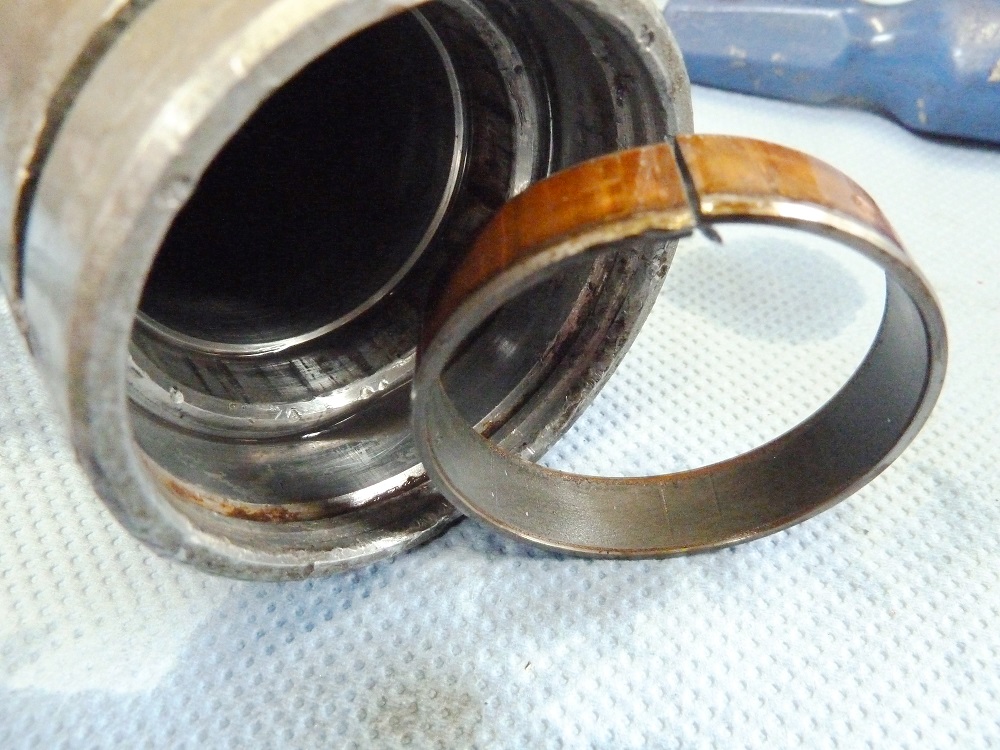workshop guide to electrical fixes

 By Steve Cooper, VJMC Editor
By Steve Cooper, VJMC Editor
Motorcycle wiring is one of those subjects that seems to really give most of us the heebie-jeebies and probably for very good reasons. As a callow youth I can still recall popping of the headlight bowl of my RD200 and staring slack jawed at the monstrosity that was wiring looms terminus. And I was only in there to change a pilot bulb.
Even on a good bike that mass of multi-coloured mayhem is enough to make grown men cry. When I later saw the inside of a Beemer’s headlight with its orderly wiring and block connectors fitted to the internal surfaces I was convinced this was the way to go. Of course, both approaches are perfectly logical but one is much cheaper to effect and this goes a long way towards explaining why Japanese motorcycles have been so commercially successful.
Moving on several decades I’m still mucking around with the bikes of my youth and I’d like to think I have a better grasp of them and this should, in all honesty, include the wiring. For reasons I still fail to grasp some owners seem to think they know better than the manufacturers or that their bikes are immune to the laws of physics.
In both instances such approaches have always cost me time, anguish, pain and occasionally money. What follows is by no means an exhaustive treatise on motorcycle wiring; rather it’s a simplistic overview on fault spotting, decision making and possible rectification.
If there’s three key, simple and immutable facts about vehicle electrics it’s these (a) nothing works properly without a good earth, (b) broken insulation doesn’t insulate & (c) any connection needs to be solid not random. Grasp these three facts before picking up a screwdriver, a multi-meter or yet another fuse and life suddenly becomes so much simpler.

An easy and straight forward electrical fix that needs no tools! A neutral switch cable just ready to be snagged by the chain. Clean the casing, add a spot of silicone adhesive to the grommet and reinstall….disaster averted.

Looks fine on first glance but look deeper and the feed and supply wires to the clock have both been pinched exposing the internal copper core. A few minutes with some heat shrink will sort it but find out why the cable got trapped.

An even worse case of entrapment and a ready cause for an under seat fire.
Someone pinched this indicator wire in the seat prop and it needs either repairing or replacing PDQ

No need to remove the bullet connector as the heat shrink sleeving slides straight over. Gentle controlled heat effects a long term repair and once again the wires routing is carefully considered to avoid a reoccurrence.

Insulation tape applied randomly like this should always ring alarm bells. It spells B-O-D-G-E and nothing else.

Beneath the tape we have a repair where someone chopped through the battery positive cable…nice! Ideally a new piece of braided wire would be the best option but if none is available and the actual repair is OK….

… we can carry out a running repair with a larger diameter piece of heat shrink knowing that it’ll protect the joint much better than tape and ensure the connector won’t some apart. Of course new wire is the ultimate answer.

And an exposed positive terminal on a negative earth bike is an electrical fire waiting to happen. It only takes a carelessly placed spanner to cause a short. For a couple of quid why wouldn’t you fit an insulating boot?

If we’re working inside the headlight bowl then taping the lens and rim to the forks makes a lot of sense. Start undoing a few wires and before you know it something expensive has just hit the deck.

Classic repair made with the wrong connector leaving the wiring exposed ready to short out on anything handy that goes back to earth. A proper repair and not insulating tape is in order here.

Fresh bullet connector, insulator and soldered connection effect a proper and long lasting repair. Is there really ever an excuse for using a bodge as longer term repair when it comes to wiring?

Apparently the answer is yes once again. This is supposed to be the earth wire from the back of the bulb holder so nothing important then? A proper soldered joint with heat shrink is the default repair if a new wire can’t be fitted.

And it just keeps getting better, or worse depending on your perspective. The outer body of the fuse holder was obviously smashed so this get-you-home bodge has remained permanent. New fuse holder now please!

And if you only ever do just one electrical job on your bike do this one. Give the earth terminals something decent to earth to. Paint, grease and corrosion are remarkably good insulators.
Very few of us are experts at everything; we learn on the job as we go along yet motorcycle wiring is a subject many shun simply because it looks so damn confusing. By starting on something as basic as checking the earthing points you can take the first step up on the ladder of knowledge. If your indicators earth via a ring terminal check that it’s tight.
If you find a wire that has copper strands showing grab a length of heat shrink and fit it; you’ve just averted a potential short and a blown fuse. Getting to grips with motorcycle electrics is an iterative process just like any other bike related job. Start off with something simple and build on from the knowledge you’ve acquired. Few of us will ever respray a bike but we’ll probably be happy painting up a few simple brackets. Likewise only a handful are ever likely to rebuild a crank but most of us are happy fitting a new set piston rings. Bike electrics are just the same; learn the basics, carry out the simplest repairs and gradually it all comes together.
Tools for the job
It’d be easy to list a whole raft of stuff you might want to own to be able to work on a motorcycle’s electrics but in reality the list can be kept fairly compact. First off some decent screwdrivers are a must in order to gain access. Next up some form of abrading tool is good in order to find a decent earth; fresh paint/powder coat or rust all wilt when faced with a rotary burr or a Dremel.
A small stock of male and female 3.9mm Japanese bullet connectors is a worthwhile investment. Keep then in individual tins or containers and they’re where you need them when you need them. Spare wire of the correct capacity is great to have in stock but only if you know which colours you’ll be needing. If you only fettle Hondas then it makes sense but if your garage is spread across several makes there may be very limited commonality.
In most instances there’s generally sufficient slack within a loom to be able to snip off a damaged fitting and fit a new one. A set of crimpers makes fitting connectors a breeze and after you’ve wasted several trying to get by with ordinary pliers you’ll know why purpose made crimpers exist. A soldering iron is a must have; buy a decent one not some cheap rubbish job. Invest in a 250grm reel of electrical solder and you’ll have enough to sort out all the bikes you are ever likely to own. A multi-meter is a useful addition and makes locating breaks in wires and high resistance connections so much easier. Anything beyond this is probably best acquired on a case by case basis.
Beyond the obvious
Outside of the areas covered by this article there are obviously numerous other issues that may come up. Rotors and stators can die with age, regulator/rectifiers can similarly croak and, ultimately looms can simply wear through with use. It’s oh so easy to jump to conclusions and start swapping out components willy-nilly until the fault apparently goes away.
This approach may address the symptoms but not necessarily the cause which may be something as basic as a bad earth. Track down a good quality manual and study the specifications for each suspect component. If they check out as being within tolerance then fault lies somewhere else. Beware of pattern looms unless they come recommended; some are fine whilst others are little better than the damaged one on your bike. And if after all of this you’re still foxed it may just be the time to call in an expert.
For more technical advice, visit Motorcycle Workshop Guides: The Complete List.
To find out more about a classic bike policy from Footman James and to get to an instant quote online, visit our Classic Bike Insurance page.
The information contained in this blog post is based on sources that we believe are reliable and should be understood as general information only. It is not intended to be taken as advice with respect to any specific or individual situation and cannot be relied upon as such.

COMMENT